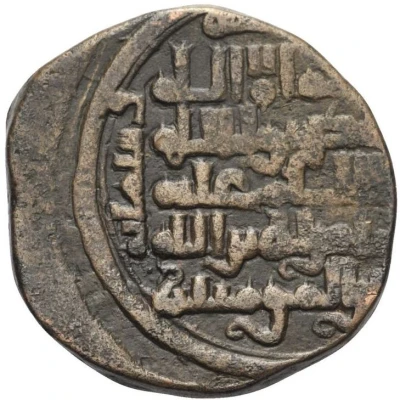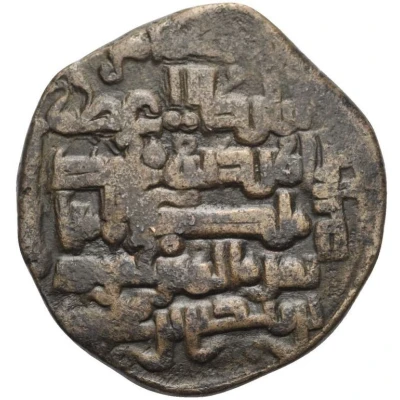


© Solidus Numismatik e.K.
Dirham - Pishkin II ibn Muhammad ND
| Copper | - | 28 mm |
| Issuer | Pishkinid dynasty (Greater Iran) |
|---|---|
| King | Pishkin II (circa 1195-1203) |
| Type | Standard circulation coin |
| Years | 1195-1205 |
| Value | Dirham (0.7) |
| Currency | Dinar (1155-1231) |
| Composition | Copper |
| Diameter | 28 mm |
| Thickness | 2 mm |
| Shape | Round (irregular) |
| Technique | Hammered |
| Orientation | Variable alignment ↺ |
| Demonetized | Yes |
| Updated | 2024-10-05 |
| Numista | N#147212 |
|---|---|
| Rarity index | 94% |
Reverse
Script: Arabic
Lettering: ضرب باهر سنة / اتابك الاعظم / ابو بكر بن محمد / ملك الامرا / بيشكين بن محمد / امير المومنين / خمسماىة
Translation:
Ḍuriba Bāhir sanah / Atābak al-Aʿẓam / Abū Bakr bin Muḥammad / Malik al-Umurāʾ / Bishkīn bin Muḥammad / Amīr al-Muʾminīn / Khamsmiʾah
Struck in Bahir year / The Great Atabeg / Abu Bakr son of Muhammad / King of the Commanders / Bishkin son of Muhammad / Commander of the Faithful / Five Hundred
Edge
Plain.
Interesting fact
One interesting fact about the Standard circulation coin Dirham - Pishkin II ibn Muhammad ND (1195-1205) from Pishkinid dynasty (Greater Iran) made of Copper is that it features a unique blend of Islamic and pre-Islamic Persian influences in its design. The coin's obverse side features an inscription in Arabic, while the reverse side features a stylized depiction of a mythical creature, which is believed to be a symbol of the ancient Persian goddess, Anahita. This blending of cultural influences reflects the rich cultural heritage of the Pishkinid dynasty and the broader region of Greater Iran during that time period.